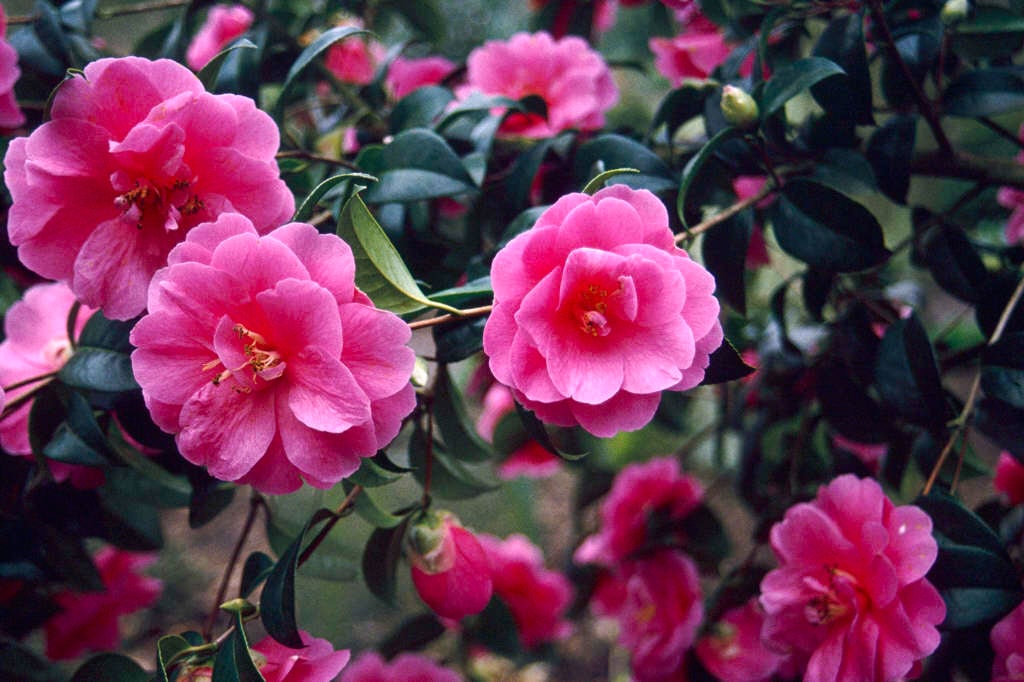Size
Ultimate height
2.5–4 metresTime to ultimate height
10–20 yearsUltimate spread
1.5–2.5 metresGrowing conditions
Moisture
Moist but well–drained, Well–drainedpH
Acid, NeutralColour & scent
| Stem | Flower | Foliage | Fruit | |
| Spring | Pink | Green | ||
|---|---|---|---|---|
| Summer | Green | |||
| Autumn | Green | |||
| Winter | Pink | Green |
Position
- Full shade
- Partial shade
Aspect
South–facing or North–facing or East–facing or West–facing
Exposure
Sheltered Hardiness
H5Botanical details
- Family
- Theaceae
- Native to GB / Ireland
- No
- Foliage
- Evergreen
- Habit
- Bushy
- Genus
Camellia are evergreen shrubs with simple, ovate, glossy, leathery leaves and showy flowers with solitary or clustered flowers early in the year
- Name status
Accepted
How to grow
Cultivation
Suitable for woodland and acidic soils sheltered from cold winds, early morning sun and late frosts to avoid flower and bud damage. See camellia cultivation
Propagation
Propagate by semi-ripe cuttings of the current years growth from late summer to late winter
Suggested planting locations and garden types
- Architectural
- City and courtyard gardens
- Low Maintenance
- Wall side borders
Pruning
Pests
May be susceptible to aphids, scale insects and vine weevil
Diseases
May be susceptible to honey fungus (rarely), phytophthora root rot, camellia gall, camellia leaf blight, camellia yellow mottle virus and flowers and camellia petal blight
Get involved
The Royal Horticultural Society is the UK’s leading gardening charity. We aim to enrich everyone’s life through plants, and make the UK a greener and more beautiful place.
